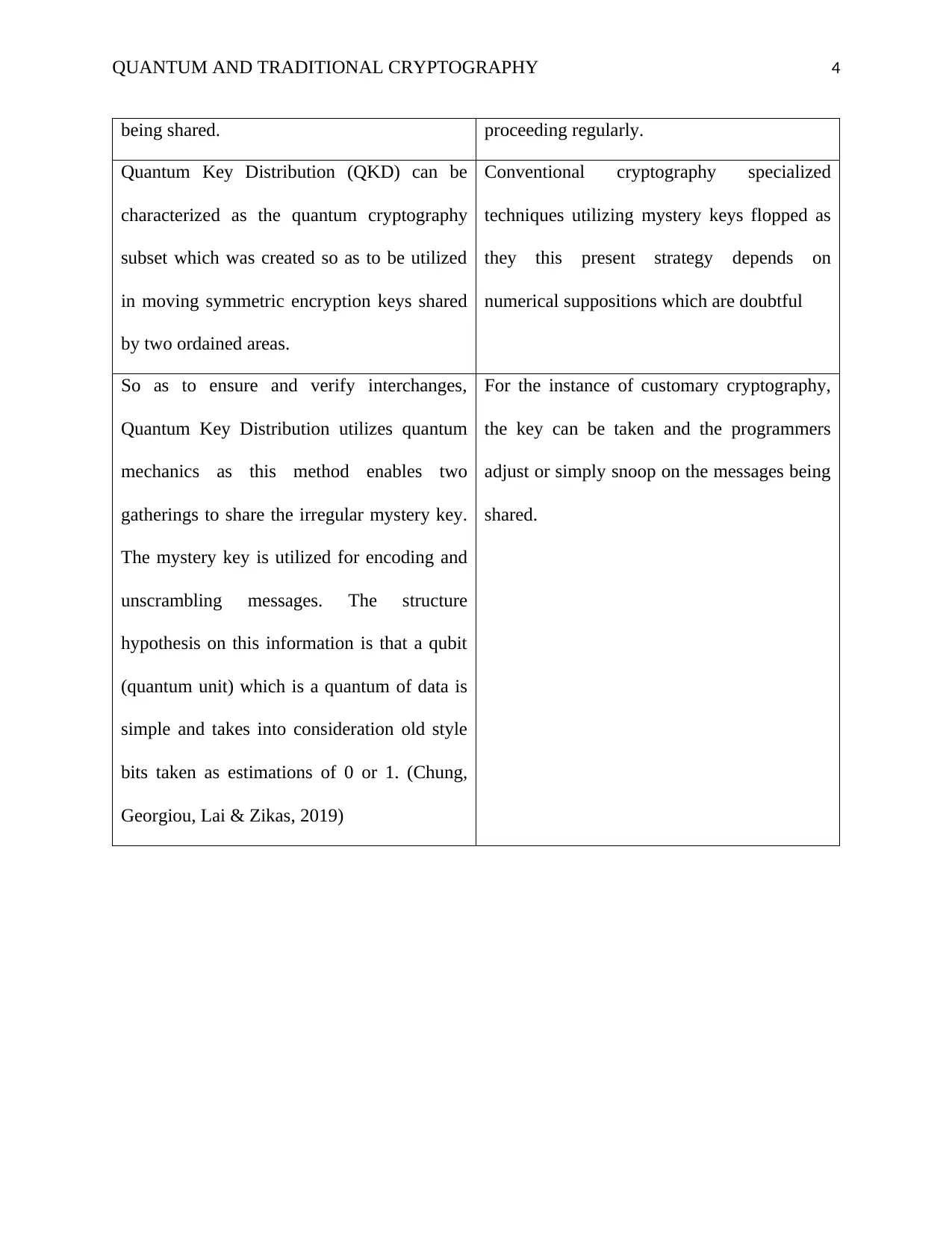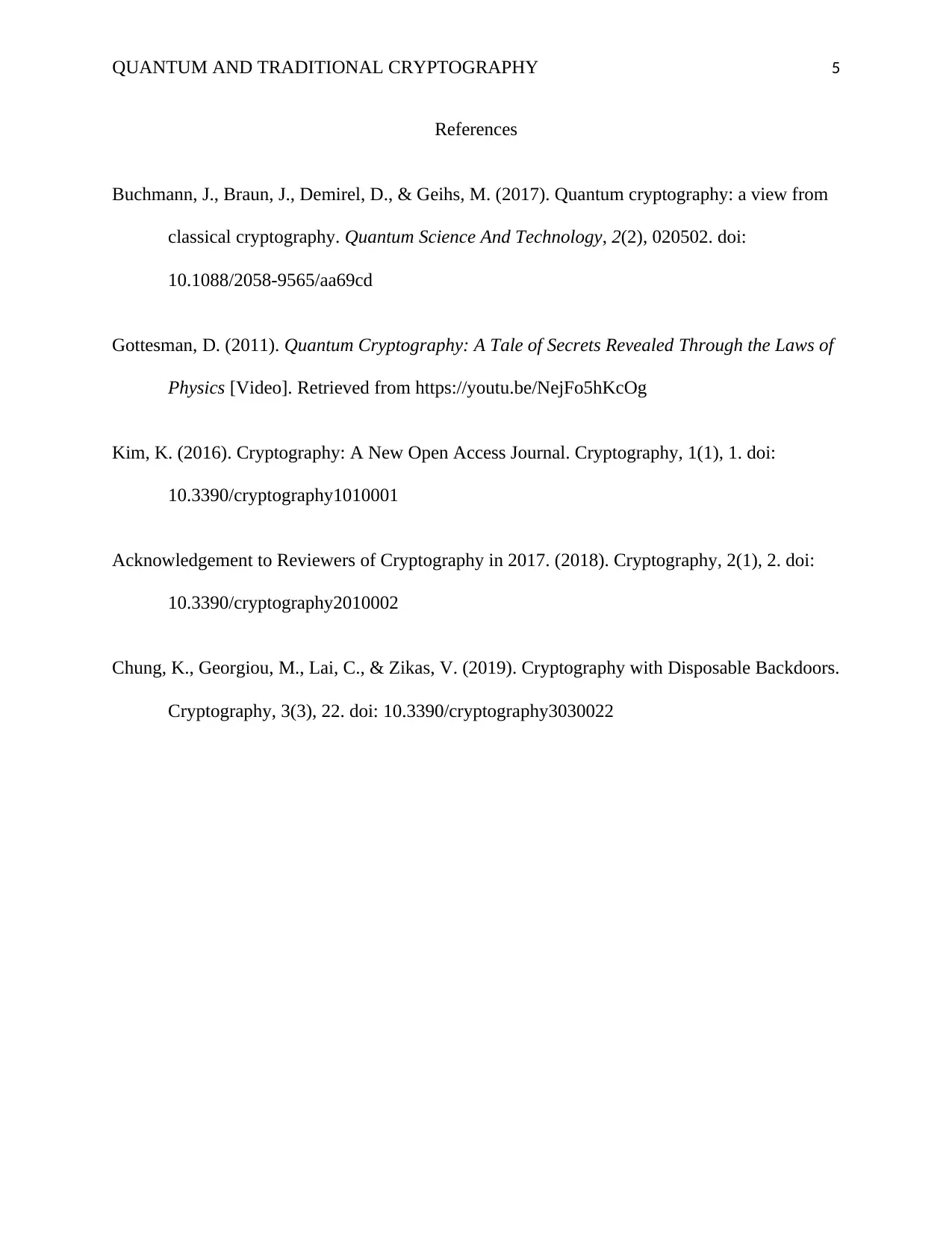Quantum and Traditional Cryptography: Techniques Comparison
VerifiedAdded on 2022/10/17
|5
|939
|8
Discussion Board Post
AI Summary
This discussion post examines the security of cryptography based on quantum mechanics, comparing it to traditional methods. The assignment addresses the design of cryptographic techniques, specifically quantum key exchange and encryption schemes, in the context of future large-scale quantum computers. It emphasizes the advantages of quantum cryptography, which utilizes the laws of physics to enhance security, particularly in the face of potential vulnerabilities in traditional cryptography. The post highlights the importance of quantum key distribution (QKD) and the potential for quantum cryptography to address rising concerns about cybercrime and data security. It also explores the limitations of traditional encryption, which can be broken, and the benefits of quantum cryptography, which makes it difficult for third parties to intercept data. The discussion also highlights the growing utilization of quantum cryptography in digital currency and payment systems.
1 out of 5








![[object Object]](/_next/static/media/star-bottom.7253800d.svg)